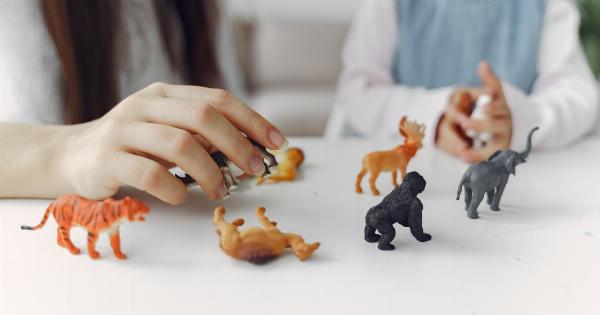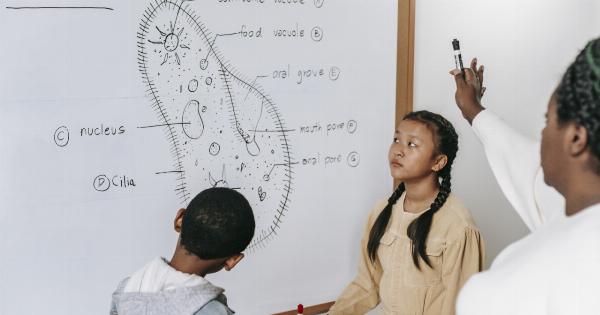As parents, one of our greatest responsibilities is to nurture and educate our children. We want them to grow up to be kind, compassionate, and empathetic individuals who understand the importance of treating all living beings with respect.
Instilling a sense of empathy and kindness towards animals and creatures in our children is one way to foster these qualities from an early age.
Why is it important to teach compassion?
Cultivating compassion in children not only helps them develop into empathetic individuals, but it also promotes their emotional and social well-being.
Research has shown that children who demonstrate empathy towards others have higher self-esteem, better emotional regulation, and more positive relationships with their peers. Additionally, teaching compassion can also contribute to the prevention of bullying and aggression, as it teaches children to consider the feelings and perspectives of others.
The role of animals in teaching compassion
Animals have a unique ability to connect with children on an emotional level. Interacting with animals can teach children about responsibility, respect, and empathy.
Whether it’s a family pet, a visit to a local animal shelter, or observing wildlife in nature, these experiences can leave a lasting impact on children and help shape their attitudes towards animals.
Through caring for a pet, children learn to put the needs of another living being before their own. This responsibility teaches them important values such as commitment, patience, and nurturing.
It also helps children develop their ability to recognize and respond to the emotions of others, as animals often communicate through nonverbal cues.
Teaching empathy through animal-related activities
There are various activities and strategies that parents can incorporate into their child’s life to promote empathy and kindness towards animals:.
1. Books and storytelling
Reading books or telling stories about animals can be a powerful way to engage children’s emotions and teach them about empathy.
Choose stories that highlight the experiences or emotions of animals, encouraging children to imagine themselves in the animal’s situation. Discussing the characters’ feelings and perspectives can help children develop a deeper understanding of empathy.
2. Volunteering at animal shelters
Volunteering at local animal shelters not only benefits the animals but also provides children with an opportunity to practice compassion and empathy.
In these settings, children can witness firsthand the impact of their actions on the well-being of animals. They can learn about animal care, help with feeding and grooming, and provide much-needed love and attention to animals in need.
3. Encouraging outdoor exploration
Nature offers numerous opportunities for children to connect with animals and develop empathy. Take your child on hikes or outdoor adventures where they can observe and appreciate wildlife.
Encourage them to notice and appreciate the beauty of nature, fostering a sense of awe and respect for all living creatures.
4. Teaching responsible pet ownership
If you have a pet at home, involve your child in their care and emphasize the importance of responsible pet ownership. Assign age-appropriate tasks such as feeding, grooming, or taking the dog for a walk.
This hands-on experience teaches children that animals have needs and feelings, which must be considered.
5. Practicing kindness towards animals
Teach your child to always treat animals with kindness and respect. Encourage them to be gentle, patient, and understanding when interacting with animals, whether they are family pets or animals they encounter in their daily lives.
6. Discussing animal welfare issues
As children grow older, it’s important to have open and honest conversations about animal welfare issues. Engage them in discussions about topics such as endangered species, habitat destruction, and the importance of conservation.
Discussing these issues helps children develop a sense of responsibility and encourages them to take action to protect animals and their environments.
The power of leading by example
It’s essential for parents to lead by example when it comes to teaching compassion for creatures.
Children learn by observing the behavior of significant adults in their lives, so it’s important to model empathy, kindness, and respect towards animals. Avoid using harmful language or engaging in activities that may harm animals, as children may interpret these actions as acceptable.
Show your child that you value and respect all creatures, whether they are pets, wild animals, or insects. Treat animals with kindness, provide them with proper care, and show empathy towards their needs.
Your child will notice these behaviors and be more inclined to adopt them as they grow.
Benefits of instilling compassion early on
Instilling compassion and kindness towards creatures in children from an early age offers numerous benefits:.
1. Emotional development
Cultivating empathy and compassion in children fosters emotional development. They learn to understand and regulate their emotions, as well as recognize the emotions of others.
This emotional intelligence contributes to healthier relationships and better communication skills.
2. Moral development
By teaching children to care for animals and treat them with kindness, we also promote their moral development. They learn the importance of fairness, responsibility, and respect for all living beings.
3. Prevention of animal cruelty
When children understand the value and significance of all creatures, they are less likely to engage in acts of animal cruelty. By instilling empathy and kindness, we can play a role in preventing future acts of harm towards animals.
4. Environmental stewardship
Children who develop compassion towards animals often extend their empathy to the environment. They become more aware of the impact of human actions on the planet and are more likely to engage in environmentally friendly behaviors as they grow.
Conclusion
Teaching compassion for creatures is a vital aspect of raising empathetic and kind children.
By providing opportunities for children to interact with animals, discussing relevant topics, and modeling compassionate behavior, parents play a crucial role in instilling empathy in their children. Nurturing their love and respect for all creatures not only contributes to their personal development but also helps create a more compassionate and caring society.






























